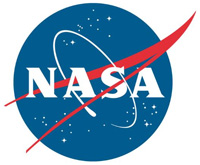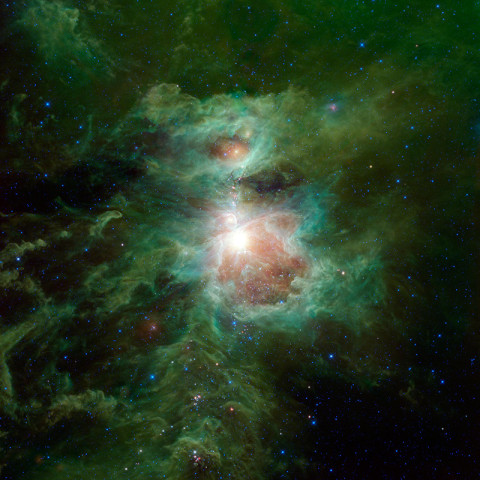Written by Whitney Clavin
NASA’s Jet Propulsion Laboratory
 Pasadena, CA – The tangle of clouds and stars that lie in Orion’s sword is showcased in a new, expansive view from NASA’s Wide-field Infrared Survey Explorer, or WISE.
Pasadena, CA – The tangle of clouds and stars that lie in Orion’s sword is showcased in a new, expansive view from NASA’s Wide-field Infrared Survey Explorer, or WISE.
Orion, the famous hunter, is visible in evening skies throughout the world from about December through April. The constellation appears tranquil and still to the naked eye, but lying in its sword, at what appears to be a slightly fuzzy star, is a turbulent cauldron of stellar birth.

Astronomers think that our sun was probably born in a similar cloud some five billion years ago. Over time, the cloud would have dispersed and the stars would have drifted apart, leaving us more isolated in space. The crowded newborn stars in the Orion nebula are less than 10 million years old — billions of years from now, they will likely spread out.
NASA’s Jet Propulsion Laboratory, Pasadena, CA, manages, and operated, WISE for NASA’s Science Mission Directorate. The spacecraft was put into hibernation mode in 2011, after it scanned the entire sky twice, completing its main objectives. Edward Wright is the principal investigator and is at UCLA.
The mission was selected competitively under NASA’s Explorers Program managed by the agency’s Goddard Space Flight Center in Greenbelt, MD. The science instrument was built by the Space Dynamics Laboratory in Logan, Utah. The spacecraft was built by Ball Aerospace & Technologies Corp. in Boulder, CO.
Science operations and data processing take place at the Infrared Processing and Analysis Center at the California Institute of Technology in Pasadena. Caltech manages JPL for NASA.
More information is online at http://www.nasa.gov/wise and http://wise.astro.ucla.edu and http://jpl.nasa.gov/wise .


